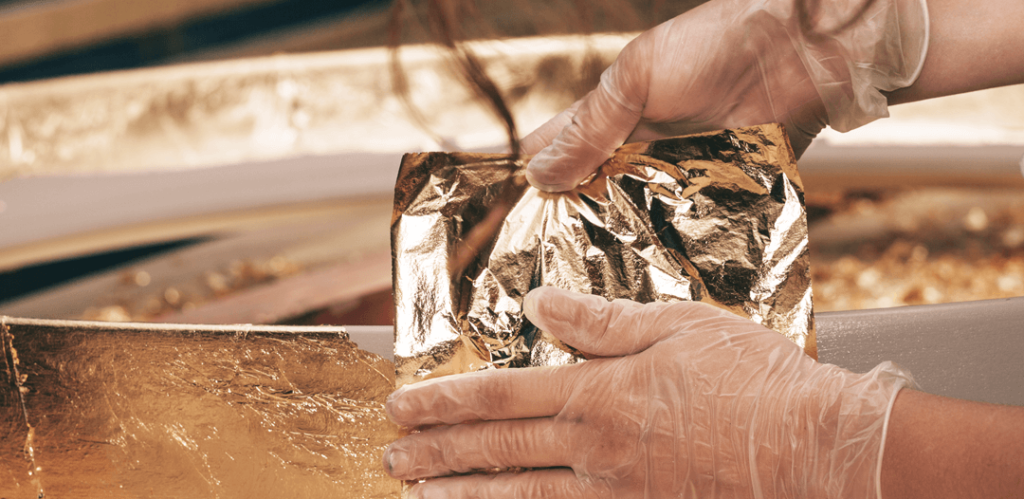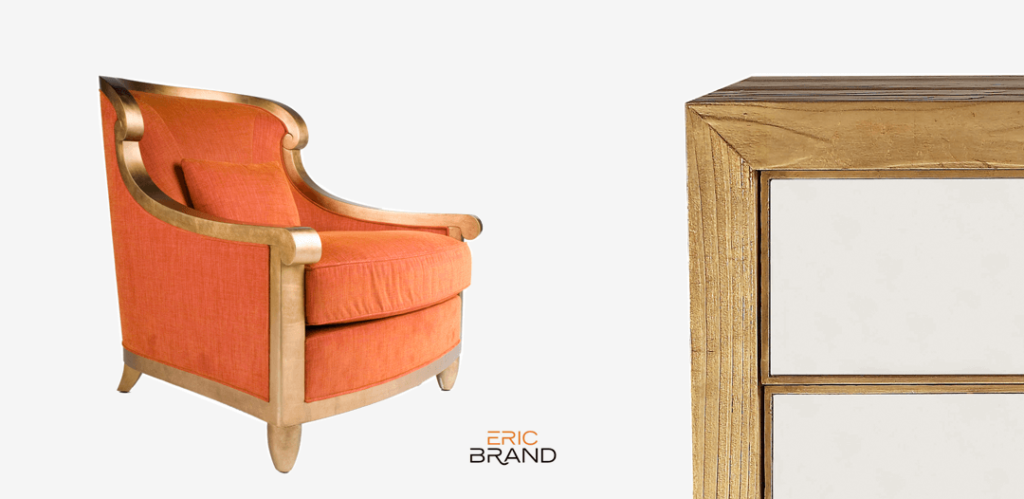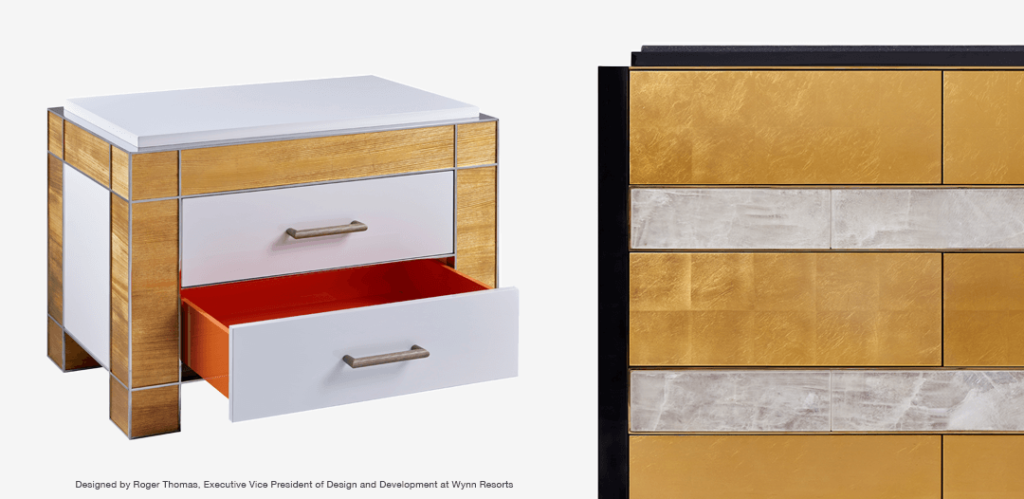Worth Its Weight In Gold: The Midas Touch of Gold Leaf Gilding
For centuries, artists and designers have turned to gold leaf as a way to make their creations shimmer and shine. Evident in everything from ancient artifacts to modern masterpieces, these glistening gold accents can enchant any work of art or architecture. Gold leaf gilding also serves another purpose besides pleasing esthetics – the gold’s non-reactive nature provides a protective finish to whatever it adorns.
Additionally, gold leaf can add elegant dazzle to your home furniture, especially if you have old pieces that are in need of a refreshing upgrade. From side tables to chairs to desks, gold leaf looks good on almost anything. We feel that adding the Midas Touch to some of our favorite pieces of furniture helps enhance their enjoyment. For example, the Eric Brand Paris Lounge Chair, as well as the Golden Gate Cabinet.
But what exactly is gold leaf, and how is it made and implemented?
The versatile technique of gold leafing began as early as the ancient Egyptians and was later refined during the Renaissance period. Today, this skilled craft is still employed using the same basic time-honored technique: the metal is hammered into thin sheets by “goldbeating.” Just how thin? Gold leaf can be made as thin as 100 – 1000 atomic layers (measured by atomic force microscopy, with a resolution on the order of fractions of a nanometer). So, yes, gold leaf is also thin enough to gild the page edges of important volumes of literature.
The process begins with a tissue thin piece (leaf) of gold. It is then hand-applied with a soft brush to a surface sprayed with glue, which is why wrinkles, lines and overlapping occur. Not only are these imperfections accepted, these markings are actually considered an important differentiation between a painted and a hand-leafed product. Gold and leaf wrinkles, lines, and blocks will vary, creating a piece that is unlike any other.
The modern manufacturing process for gold leafing is incredibly meticulous and intricate. It involves:
- Melting the gold into bars
- Bar pressing
- Belt cutting
- Softening the gold pieces
- Hand hammering
- Manual cutting of leaves
- Incubating
- Layering spills with black paper
- Placing them in an electric furnace
- Machine hammering
- Second layering
- More hammering
- Papering
- And lastly, inspection
A long, involved process no doubt, but the ends definitely justify the means.
Gold was the color of the gods and the pharaohs in ancient Egypt – and while your home may not be one of the Great Pyramids – all it takes to make your space feel regal is a light, golden touch.
––––––––––––––––––––––––––––––––––––––––––––––
ERIC BRAND
Founded in 1996 and based in San Francisco, Eric Brand offers custom-styled furniture and worldwide sourcing along with exquisite materials and finishes, specifically for the high-end residential design market and hospitality industry.
JUNIPER
Named after the fog-licked Juniper trees on the hills of San Francisco, Juniper is an in-stock furniture collection by Eric Brand that pays homage to timeless materials, techniques and silhouettes – brought to life through expert craftsmanship.





